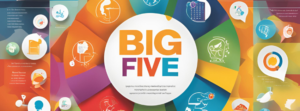
General Managers in the industrial equipment sector face unique challenges that require both strategic foresight and hands-on financial expertise. With rapidly changing technology, customer expectations, and increasing competition, they must stay ahead. In this first part, we’ll dive into two key aspects of their role: developing a strategic vision that inspires and guides their team and taking a proactive approach to financial management. Mastering these skills will help them navigate today’s challenges and set their organization up for long-term success.
1. Developing a Strategic Vision
A successful General Manager doesn’t just react to market changes—they anticipate them, formulate strategies that align with the company’s long-term objectives, create actionable KPIs, and ensure staff are engaged in achieving the department’s goals (Hanna et al., 2024). Setting clear objectives and monitoring their implementation can significantly reduce risks while improving decision-making. A thorough understanding of the internal and external business environment is essential to do this effectively. This strategic vision is not just a plan but a beacon of inspiration that guides the entire team toward a common goal.
Example of Developing Strategic Vision through SWOT Analysis:
- Strengths: Understanding the organization’s core strengths allows a General Manager to leverage these assets in crafting a robust strategy (Kenton, 2024). For example, if the company has strong brand recognition in the industrial equipment sector, this can be a key factor in maintaining competitive advantage.
- Weaknesses: A successful General Manager will also recognize the company’s internal weaknesses and work to mitigate them (Kenton, 2024). This could involve addressing inefficiencies in the supply chain or resolving skill gaps within the team.
- Opportunities: The industrial equipment and retail sectors are constantly evolving. General Managers should capitalize on market opportunities such as expanding into new regions, offering new services, or adopting emerging technologies like AI and automation (Kenton, 2024).
- Threats: Effective General Managers must also anticipate external threats that could disrupt operations. This includes economic fluctuations, competitor activity, and regulatory changes that could impact profitability or market share (Kenton, 2024).
2. Hands-on Financial Management
One of the critical roles of a General Manager is managing the department’s budget and financial performance, including creating annual budgets, assigning responsibilities, tracking expenditures, and resolving any discrepancies. Effective P&L (Profit and Loss) management ensures the department runs efficiently and remains aligned with financial goals (Hanna et al., 2024).
The best tools for managing a department’s budget and financial performance must include a combination of financial software, analytics tools, and project management platforms. Here are some of the top tools widely used by General Managers and financial leaders to ensure effective budget management and financial performance tracking:
- ERP Systems (Enterprise Resource Planning): ERP systems such as SAP, Oracle ERP, and Microsoft Dynamics 365 provide a comprehensive view of a company’s financial health by integrating data from various departments, including finance, HR, and operations. These systems streamline processes like budgeting, expense tracking, and financial reporting (Oracle ERP, n.d.; SAP, n.d.; Microsoft Dynamics 365, n.d.).
- Budgeting and Forecasting Software: Tools like Adaptive Insights, Anaplan, and Prophix are designed specifically for budgeting and forecasting, allowing managers to set financial goals, track expenditures, and adjust forecasts based on real-time data (Adaptive Insights, n.d.; Anaplan, n.d.). They also often come with scenario analysis features that help identify risks and opportunities in financial planning.
- Expense Management Software: Solutions like Expensify, Concur, and Zoho Expense simplify the process of tracking departmental spending, allowing managers to monitor expenses, set limits, and streamline reimbursement processes (Expensify, n.d.; Concur, n.d.; Zoho Analytics, n.d.).
- Financial Analytics and Reporting Tools: Financial analytics tools such as Power BI and Tableau enable managers to visualize financial data, track performance, and analyze trends (Power BI, n.d.; Tableau, n.d.). For smaller companies, tools like QuickBooks are often used to manage financial performance (QuickBooks, n.d.).
- Project Management Tools with Financial Tracking: Project management tools like Asana, Monday.com, and Trello (with financial tracking integrations) allow managers to oversee budgets on a project-by-project basis while tracking time, resource allocation, and overall project costs (Asana, n.d.; Monday.com, n.d.; Trello, n.d.).
- Cloud Accounting Software: Tools like Xero, FreshBooks, and NetSuite offer real-time financial reporting and easy collaboration between departments (Xero, n.d.; FreshBooks, n.d.; NetSuite, n.d.). These tools are ideal for small to medium-sized businesses seeking scalable financial management solutions.
- P&L Management Software: Platforms like Profit.co and Sage Intacct are designed for profit and loss management, helping General Managers monitor the company’s financial health and make adjustments to business strategies as needed (Profit.co, n.d.; Sage Intacct, n.d.).
The best tool depends on the company’s size, the complexity of its operations, and the specific financial management needs. ERP systems like SAP or Oracle are comprehensive solutions for larger enterprises, while Adaptive Insights or Expensify might be better for companies focused on budgeting and expense management. For smaller businesses, cloud-based options like QuickBooks or Xero provide a user-friendly way to stay on top of financial performance.
Conclusion
To wrap things up, having a clear strategic vision and a solid grip on financial management is critical for General Managers to thrive in the industrial equipment sector. By focusing on these areas and utilizing the right tools, they can steer their department toward growth and profitability. In the next post, we’ll explore how they can ensure compliance, build a culture of continuous learning within their team, boost process efficiency, and maintain strong communication with all stakeholders to foster trust and accountability.
For your self-reflection after reading this article, what do you think are the best strategies you have found most effective in developing a strong strategic vision or managing financial performance? Have you tried any of the tools mentioned here? Share your thoughts and experiences in the comments below!
References
Adaptive Insights. (n.d.). Budgeting and forecasting software. https://www.adaptiveinsights.com
Anaplan. (n.d.). Budgeting and forecasting platform. https://www.anaplan.com
Asana. (n.d.). Project management and financial tracking software. https://www.asana.com
Concur. (n.d.). Expense management solutions. https://www.concur.com
CultureAmp. (n.d.). Employee engagement and performance management platform. https://www.cultureamp.com
Expensify. (n.d.). Expense management software. https://www.expensify.com
FreshBooks. (n.d.). Cloud accounting software. https://www.freshbooks.com
Google Data Studio. (n.d.). Data visualization and reporting tool. https://marketingplatform.google.com/about/data-studio/
Hanna, K. T., Bigelow, S. J., & Pratt, M. K. (2024, March 19). What is strategic planning?: Definition from TechTarget. CIO. https://www.techtarget.com/searchcio/definition/strategic-planning
Kenton, W. (2024, June 29). How to perform swot analysis. Investopedia. https://www.investopedia.com/terms/s/swot.asp
Klipfolio. (n.d.). Real-time dashboards and reporting. https://www.klipfolio.com
Lattice. (n.d.). Performance reviews and employee engagement platform. https://www.lattice.com
LinkedIn Learning. (n.d.). Professional development and learning platform. https://www.linkedin.com/learning
Microsoft Dynamics 365. (n.d.). ERP system. https://dynamics.microsoft.com
Monday.com. (n.d.). Project management and collaboration tool. https://www.monday.com
NetSuite. (n.d.). Cloud-based ERP and financial management software. https://www.netsuite.com
Oracle ERP. (n.d.). Enterprise resource planning software. https://www.oracle.com
Power BI. (n.d.). Business intelligence and analytics tool. https://powerbi.microsoft.com
Profit.co. (n.d.). P&L management and profit optimization software. https://www.profit.co
QuickBooks. (n.d.). Accounting software. https://quickbooks.intuit.com
Sage Intacct. (n.d.). Cloud financial management platform. https://www.sageintacct.com
SAP. (n.d.). ERP and business software solutions. https://www.sap.com
Tableau. (n.d.). Data visualization and business intelligence tool. https://www.tableau.com
Trello. (n.d.). Task management and project collaboration tool. https://www.trello.com
Udemy for Business. (n.d.). Corporate learning and development platform. https://www.udemy.com/business
Xero. (n.d.). Cloud accounting software. https://www.xero.com
Zoho Analytics. (n.d.). Data analytics and reporting platform. https://www.zoho.com/analytics/






